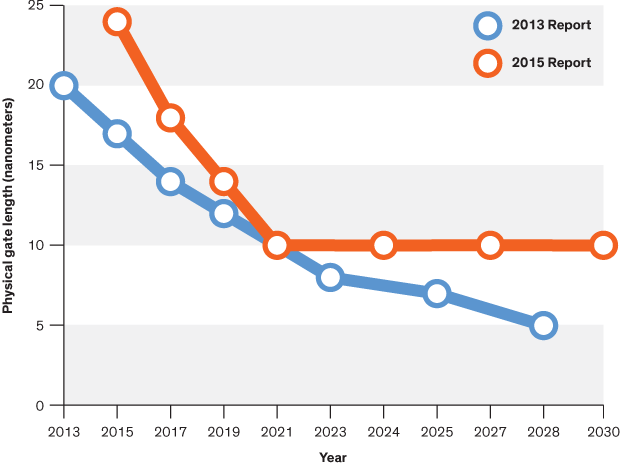Semiconductor industry earthquake: Moore's law will expire in five years
After over 50 years of relentless miniaturization, the shrinking of transistors is expected to come to a halt by 2021. This prediction comes from the 2015 International Technology Roadmap for Semiconductors (ITRS), signaling the end of Moore's Law as we know it. The roadmap highlights that while chip manufacturers will still strive to reduce transistor sizes beyond 2021, it will no longer be economically viable. Instead, the industry is shifting toward vertical integration—stacking circuits in layers to boost transistor density.

This shift has sparked debate about whether it marks another milestone in the decline of Moore’s Law. Some even suggest this could be the final version of the ITRS roadmap, signaling a major turning point in the semiconductor industry.
The Semiconductor Industry Association (SIA), representing companies like IBM and Intel, attributes the decline in participation to growing interest in alternative research initiatives. To address this, SIA is collaborating with the Semiconductor Research Corporation (SRC) to prioritize government and industry-funded R&D projects. Other ITRS members are also working on developing a new roadmap for future technological guidance.
According to Dan Hutcheson, an analyst at VLSI Research, the changes in the roadmap may seem like a minor administrative adjustment, but for the industry, it feels more like a “major earthquake.â€
Moore’s Law and the ITRS Roadmap
In 1965, Gordon Moore, co-founder of Intel, observed that the number of components on an integrated circuit would double every year. This observation was later refined into what became known as "Moore's Law": the number of transistors per unit area doubles approximately every 18 months. In 1975, Moore adjusted the timeline to every two years, reflecting the slower pace of progress in the semiconductor industry.
However, achieving the goals outlined by Moore's Law isn't just about luck—it requires coordinated efforts across multiple industries, including equipment manufacturers, software developers, and material suppliers. To align these efforts, the semiconductor industry developed a common roadmap for technological advancement.
Founded in 1992, the Semiconductor Industry Association (SIA) began publishing the first such roadmap. By 1998, it had expanded into the International Technology Roadmap for Semiconductors (ITRS), bringing together global organizations to guide the industry's development.
Changing Times
As the industry pushed further toward smaller transistors, the costs and technical challenges increased dramatically, leading to significant consolidation. In 2001, around 19 companies were producing the most advanced logic chips, but today only four remain: Intel, TSMC, Samsung, and GlobalFoundries. IBM, once a key player, recently sold its chip manufacturing division to GlobalFoundries.
Hutcheson notes that these remaining companies have their own roadmaps and maintain direct communication with their suppliers. The competition among them is fierce:
"They don’t want to sit in a room and discuss their needs. It's more like a football game—starting off fun, but getting brutal during the playoffs."
Paolo Gargini, chair of the ITRS, points out that the industry has changed significantly. Many semiconductor companies no longer manufacture their own chips, instead relying on foundries for advanced technology. Meanwhile, chip designers and buyers like Apple, Google, and Qualcomm are increasingly shaping the direction of future chip development.
Gargini added, "Once, semiconductor companies decided the features of their products. Now, that’s no longer the case."
Used Hasee Laptops,Hasee Laptop,Hasee Gaming Laptop,Hasee Laptop Price
Guangzhou Panda Electronic Technology Co., LTD , https://www.panda-3c.com